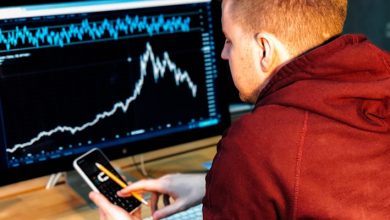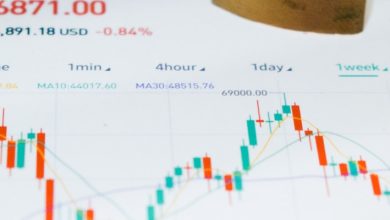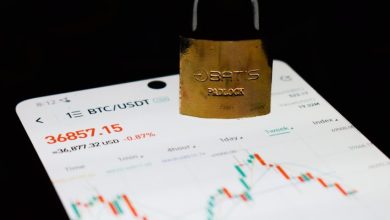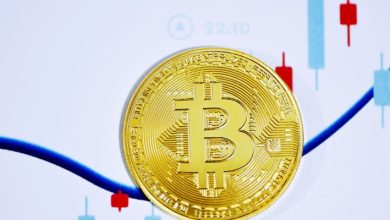The Role of NFTs in the Broader Crypto Market Ecosystem
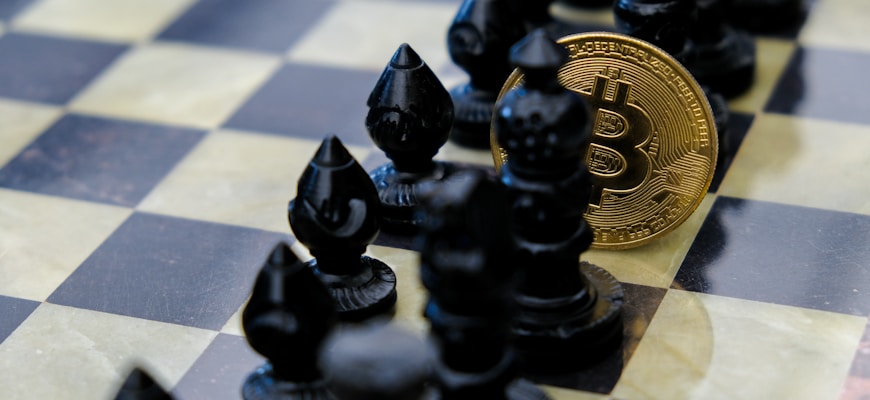
- Understanding the basics of NFTs and their significance in the crypto market
- Exploring the impact of NFTs on the digital art world and collectibles market
- The intersection of NFTs and decentralized finance (DeFi) platforms
- Challenges and opportunities for NFTs within the broader crypto ecosystem
- NFTs as a tool for promoting ownership and authenticity in the digital realm
- The future outlook for NFTs and their potential to revolutionize the crypto market
Understanding the basics of NFTs and their significance in the crypto market
NFTs, or Non-Fungible Tokens, are unique digital assets that represent ownership of a specific item or piece of content. Unlike cryptocurrencies like Bitcoin or Ethereum, which are fungible and can be exchanged on a one-to-one basis, NFTs are indivisible and cannot be exchanged for another token of equal value.
One of the key features of NFTs is their ability to provide proof of ownership and authenticity for digital assets. This has significant implications for the art world, as it allows artists to create and sell digital artwork with a verifiable and secure record of ownership. NFTs have also been used in other industries, such as music, gaming, and collectibles, to create unique and tradable digital assets.
In the crypto market, NFTs have become increasingly popular as a way to invest in and trade digital assets. The unique nature of NFTs means that they can have significant value, with some rare tokens selling for millions of dollars. This has attracted a new wave of investors and collectors to the crypto market, driving up demand for NFTs and creating new opportunities for artists and creators.
Overall, NFTs play a significant role in the broader crypto market ecosystem by providing a new way to create, buy, and sell digital assets. As the popularity of NFTs continues to grow, they are likely to become an increasingly important part of the crypto market, offering new opportunities for investors, artists, and creators alike.
Exploring the impact of NFTs on the digital art world and collectibles market
The advent of NFTs has had a profound impact on the digital art world and collectibles market. These unique tokens have revolutionized the way artists and collectors interact, allowing for the creation and trade of digital assets in a secure and transparent manner. NFTs have opened up new opportunities for artists to monetize their work and for collectors to own rare and one-of-a-kind pieces.
One of the key advantages of NFTs is that they provide a way to prove ownership and authenticity of digital assets, something that was previously difficult to achieve in the digital space. This has led to a surge in interest from both artists and collectors, as NFTs offer a way to create scarcity and value in a digital world. As a result, the digital art world has seen a renaissance, with artists exploring new mediums and styles to take advantage of this innovative technology.
In addition to the digital art world, NFTs have also had a significant impact on the collectibles market. Collectors are now able to buy, sell, and trade digital collectibles with ease, knowing that their ownership is secure and verifiable on the blockchain. This has led to a boom in the market for digital collectibles, with everything from virtual trading cards to virtual real estate being bought and sold as NFTs.
Overall, the impact of NFTs on the digital art world and collectibles market has been transformative. Artists and collectors alike are embracing this new technology, which has the potential to revolutionize the way we create, buy, and sell digital assets. As NFTs continue to gain traction, we can expect to see even more innovation and growth in these sectors in the years to come.
The intersection of NFTs and decentralized finance (DeFi) platforms
NFTs have recently gained significant attention in the crypto market ecosystem, with many investors looking to capitalize on the unique opportunities they offer. One area where NFTs are starting to make a big impact is in the intersection with decentralized finance (DeFi) platforms.
The combination of NFTs and DeFi opens up a whole new world of possibilities for users. By leveraging the benefits of blockchain technology, NFTs can be used as collateral for loans on DeFi platforms, allowing investors to access liquidity without having to sell their valuable digital assets.
Furthermore, NFTs can also be used to create new financial products and services on DeFi platforms, such as tokenized art funds or fractionalized ownership of digital collectibles. This not only expands the utility of NFTs but also brings more liquidity to the market, driving further innovation and growth.
Overall, the intersection of NFTs and DeFi platforms represents a significant step forward in the evolution of the crypto market ecosystem. By harnessing the power of blockchain technology, investors can now access a wide range of financial opportunities that were previously unavailable. As the market continues to mature, we can expect to see even more creative use cases for NFTs in DeFi, further solidifying their place in the broader crypto landscape.
Challenges and opportunities for NFTs within the broader crypto ecosystem
As NFTs continue to gain popularity within the broader crypto ecosystem, they bring both challenges and opportunities to the table. One of the key challenges facing NFTs is their environmental impact, as the energy consumption required for minting and trading NFTs has raised concerns about sustainability. However, this challenge also presents an opportunity for NFT platforms to explore more eco-friendly alternatives, such as utilizing proof-of-stake mechanisms instead of proof-of-work.
Another challenge for NFTs is the issue of scalability, as the current blockchain infrastructure may struggle to handle the increasing demand for NFT transactions. This challenge opens up opportunities for developers to innovate and create solutions that can improve the scalability of NFT platforms, making them more efficient and accessible to a wider audience.
Moreover, the lack of interoperability among different NFT platforms poses a challenge for users who want to trade or use NFTs across multiple marketplaces. This challenge presents an opportunity for standardization efforts within the NFT space, which can help create a more seamless experience for users and boost the overall adoption of NFTs in the crypto market ecosystem.
NFTs as a tool for promoting ownership and authenticity in the digital realm
NFTs (Non-Fungible Tokens) have emerged as a revolutionary tool in the digital realm, offering a unique way to promote ownership and authenticity. These digital assets are designed to represent ownership of a specific item or piece of content, whether it be art, music, collectibles, or even virtual real estate. By utilizing blockchain technology, NFTs provide a secure and transparent way to verify the authenticity and provenance of digital assets.
One of the key benefits of NFTs is their ability to create a sense of ownership in the digital space. Unlike traditional digital assets that can be easily copied or replicated, NFTs are one-of-a-kind tokens that cannot be duplicated. This scarcity gives NFT holders a sense of exclusivity and ownership over their digital assets, similar to owning a physical item in the real world.
Furthermore, NFTs also serve as a powerful tool for artists and creators to establish their authenticity and originality in the digital marketplace. By minting their work as NFTs, artists can prove the provenance of their creations and ensure that they receive proper credit and compensation for their efforts. This not only helps to protect artists’ intellectual property rights but also fosters a more equitable and transparent ecosystem for creators in the digital space.
Overall, NFTs play a crucial role in promoting ownership and authenticity in the digital realm by leveraging blockchain technology to create unique and verifiable digital assets. As the NFT market continues to grow and evolve, we can expect to see even greater opportunities for artists, creators, and collectors to participate in this exciting new frontier of digital ownership.
The future outlook for NFTs and their potential to revolutionize the crypto market
NFTs have been gaining significant momentum in the crypto market, with their unique ability to represent ownership of digital assets. As the technology continues to evolve, the future outlook for NFTs appears promising, with the potential to revolutionize the broader crypto market ecosystem.
One of the key advantages of NFTs is their ability to provide provenance and authenticity for digital assets, making them highly desirable for collectors and investors alike. This feature has the potential to attract a wider audience to the crypto market, driving increased adoption and liquidity.
Furthermore, NFTs have the potential to unlock new revenue streams for content creators, enabling them to tokenize their work and sell it directly to consumers. This direct-to-consumer model removes the need for intermediaries, allowing creators to retain more of the value generated by their creations.
In addition, the interoperability of NFTs with other blockchain platforms opens up a world of possibilities for cross-platform asset trading and collaboration. This seamless integration could lead to a more interconnected and efficient crypto market, driving innovation and growth in the space.
Overall, the future outlook for NFTs is bright, with the potential to reshape the way we think about ownership, value, and trade in the digital realm. As the technology continues to mature and evolve, it will be fascinating to see how NFTs continue to revolutionize the crypto market and unlock new opportunities for creators, collectors, and investors alike.

